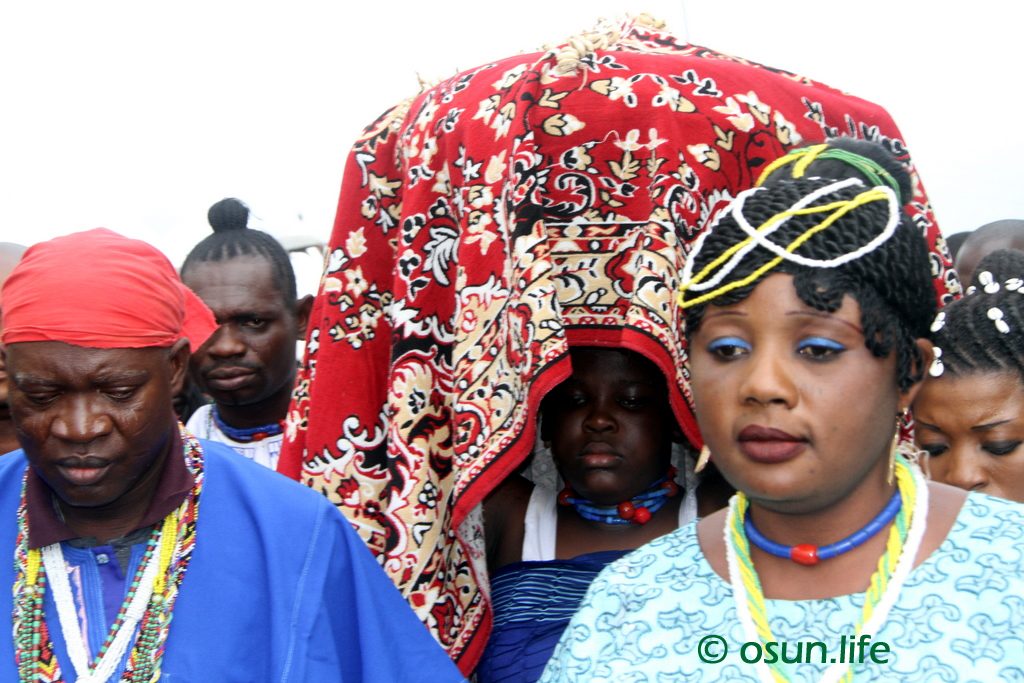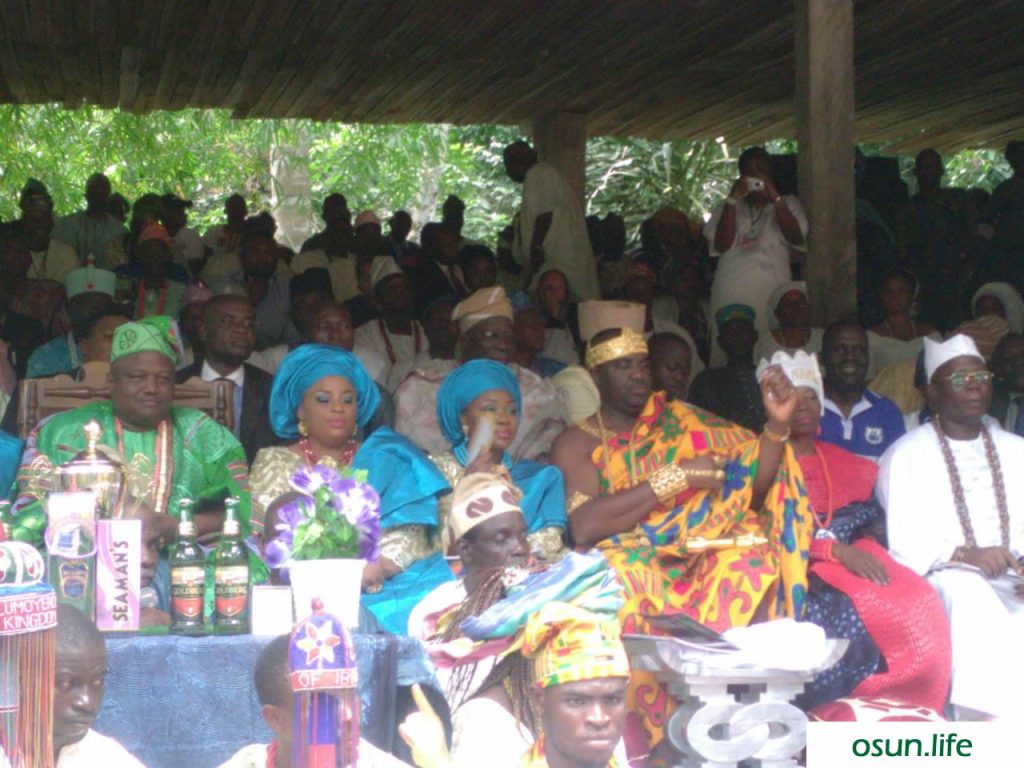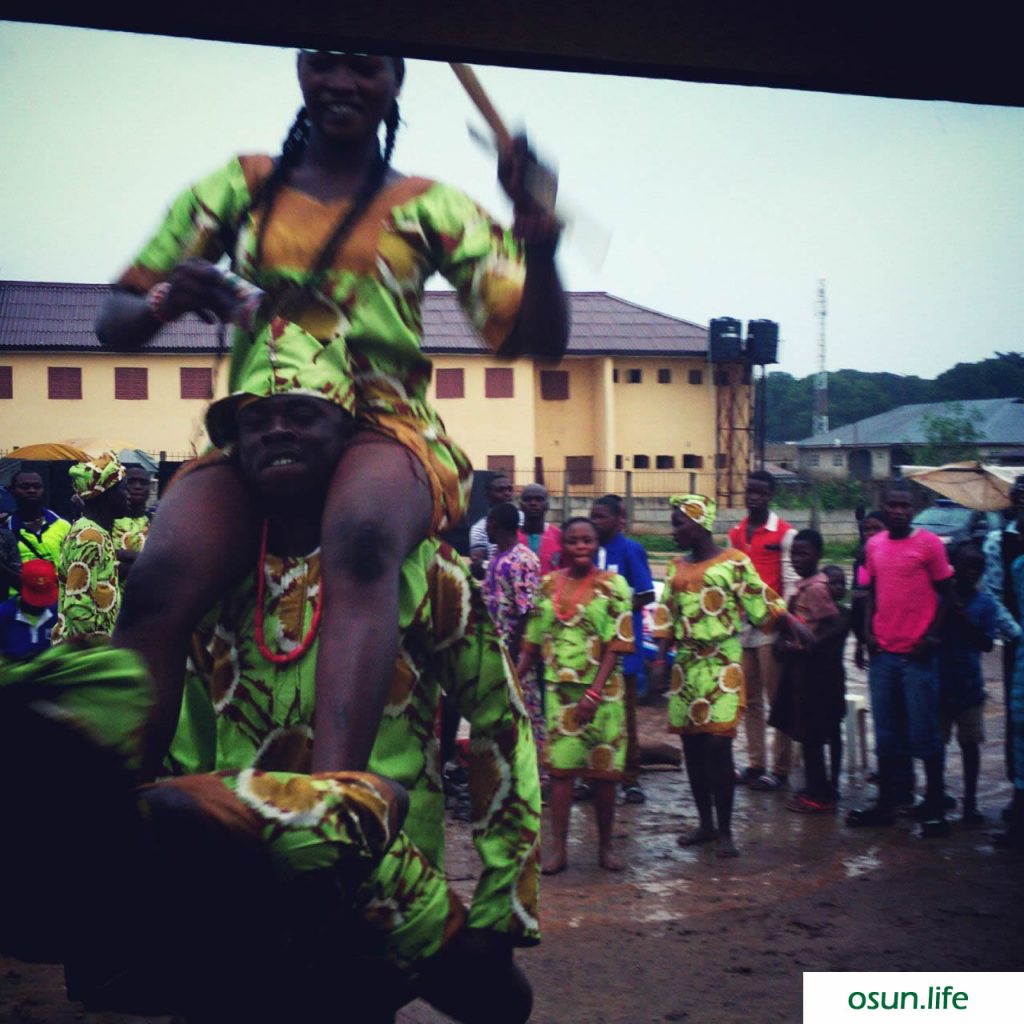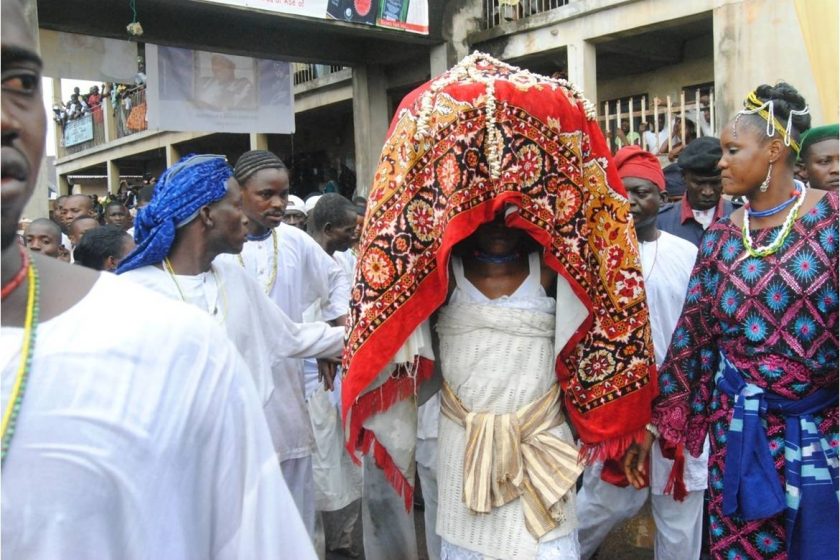He was particularly aroused with the thundering-rythmic-beats coming from the aesthetic traditional performers. The town was already filled and dotted with brands of sponsoring corporate organisations in the days before. The young man had been abandoned in wonders actually, clueless of what his environment was graduating to in a wet month of August.
He noticed faces unfamiliar with the state and even the country, perhaps the continent too. He was sure of his sight and “this could not just be a festival as I was told,” the young Hennessy Agwu said.
 He was up in the foggy morning, with a dying wish of participating in the annual internationally recognised festival, Osun-Osogbo festival. Only the people in attendance could firmly appreciate the sight of unseen beauty of the ‘Arugba’ commanded the world’s attention. Hennessy was there. As he hacked his path through the swarm of bodies that were bent on catching a glimpse of the virgin calabash bearer. He thought of the sleepy Isale Osun environment as an overinflated balloon, about to burst on this day.
He was up in the foggy morning, with a dying wish of participating in the annual internationally recognised festival, Osun-Osogbo festival. Only the people in attendance could firmly appreciate the sight of unseen beauty of the ‘Arugba’ commanded the world’s attention. Hennessy was there. As he hacked his path through the swarm of bodies that were bent on catching a glimpse of the virgin calabash bearer. He thought of the sleepy Isale Osun environment as an overinflated balloon, about to burst on this day.
Major areas around the venue, particularly the Oja-Oba area route linking the river would beg for their lives as spectators would trample on them a million times. close to grove, scores would perch on trees, debris, on every standing matters and on the shore of the river, hurdled masses of traditionalists filled every inch of space, pushing and washing in one another’s sweat, standing on toes and heels; succeeded.
The congregation knows better and had long learnt to respect the goddess of the river who provides for its devotees, wealth, health, peace and other spices of life and the calabash bearer, especially when she showed up after several days in seclusion.
Wikipedia held that the Osun-Osogbo Grove was among the last of the sacred forests which usually adjoined the edges of most Yoruba cities before extensive urbanization. In recognition of its global significance and its cultural value, the Sacred Grove was inscribed as a UNESCO World Heritage site in 2005.
“The 1950s saw the desecration of the Osun-Osogbo Grove: shrines were neglected, priests abandoned the grove as customary responsibilities and sanctions weakened. Prohibited actions like fishing, hunting and felling of trees in the grove took place until Austrian, Susanne Wenger, came and stopped the abuse going on in the grove.
“With the encouragement of the Ataoja and the support of the local people, “Wenger formed the New Sacred Art movement to challenge land speculators, repel poachers, protect shrines and begin the long process of bringing the sacred place back to life by establishing it, again, at the sacred heart of Osogbo.
“Every year, the Osun-Osogbo festival is celebrated in the month of August at the grove. Yearly, the festival attracts thousands of Osun worshippers, spectators and tourists from all walks of life. For the people of Osogbo Land, August is a month of celebration, traditional cleansing of the city and cultural reunion of the people with their ancestors and founders of the Osogbo Kingdom.

The Osun-Osogbo Festival is a two-week-long programme. It starts with the traditional cleansing of the town called ‘Iwopopo’, which is followed in three days by the lighting of the 500-year-old sixteen-point lamp called ‘Ina Oloju merindinlogun’. Ina Oloju merindinlogun, the sacred lamp lit at the beginning of the annual Osun-Osogbo festival then comes the ‘Ibroriade’, an assemblage of the crowns of the past ruler, Ataojas of Osogbo, for blessings. This event is led by the sitting Ataoja of Osogbo and the Arugba, Yeye Osun and a committee of priestesses.
Mustapha Aleem wrote in from Osogbo via aleem_mustapha@yahoo.com.
Social Media Links
Facebook – www.facebook.com/osundotlife
Instagram – www.instagram.com/osundotlife
Twitter – www.twitter/osundotlife
Kindly share this story | All rights reserved. This material, and other digital content on this website, may not be reproduced, published, broadcast, rewritten or redistributed in whole or in part without prior express written permission from OSUNDOTLIFE.
Contact: editor@osun.life
WhatsApp: 📲 +2348092333666

